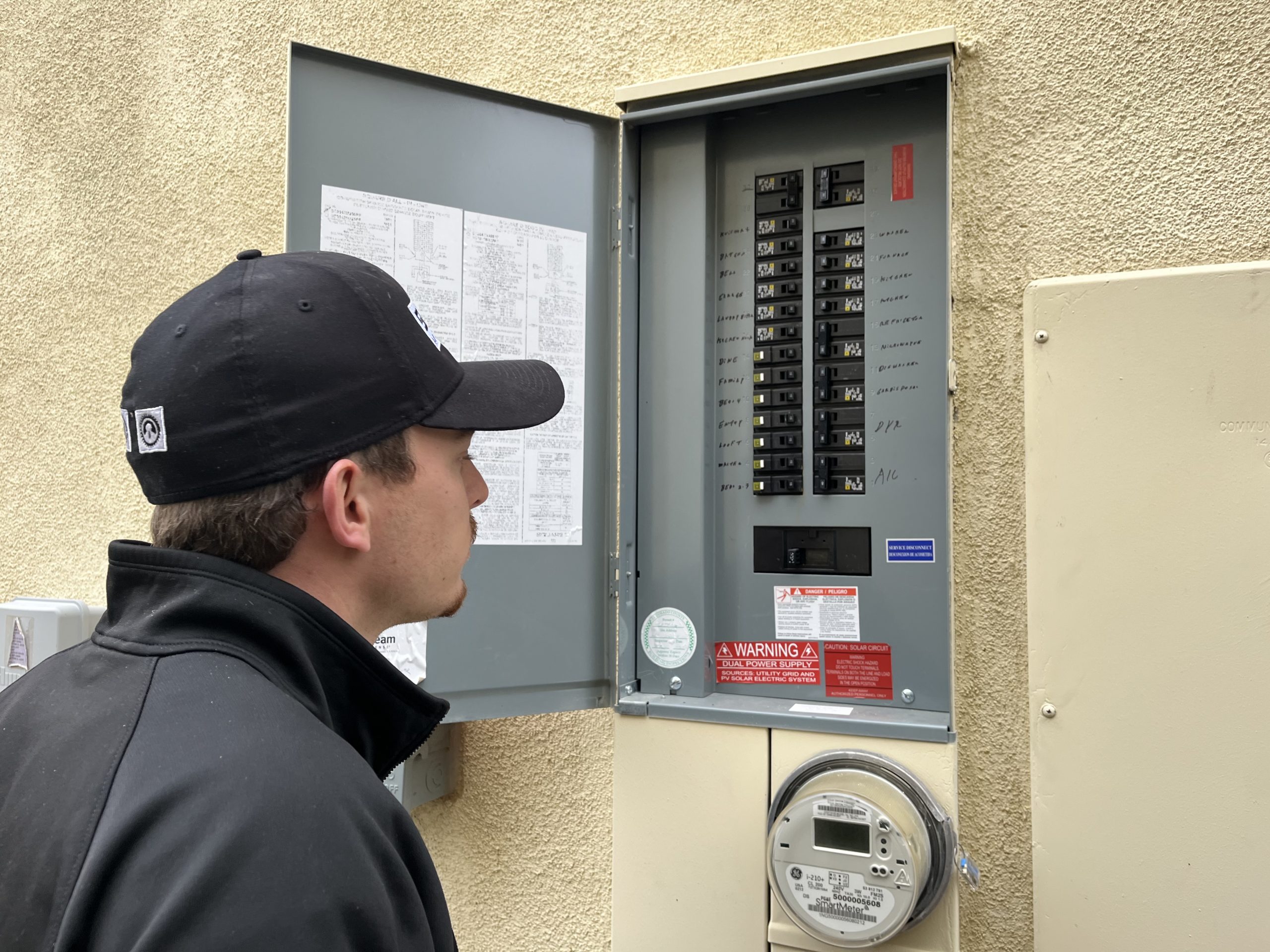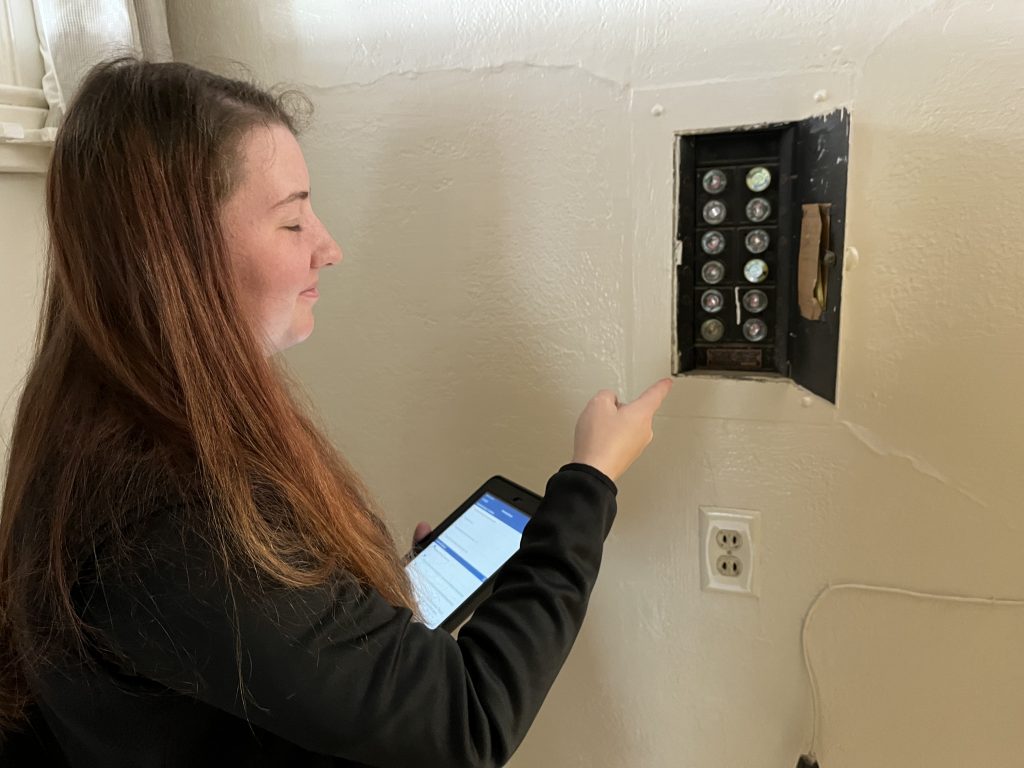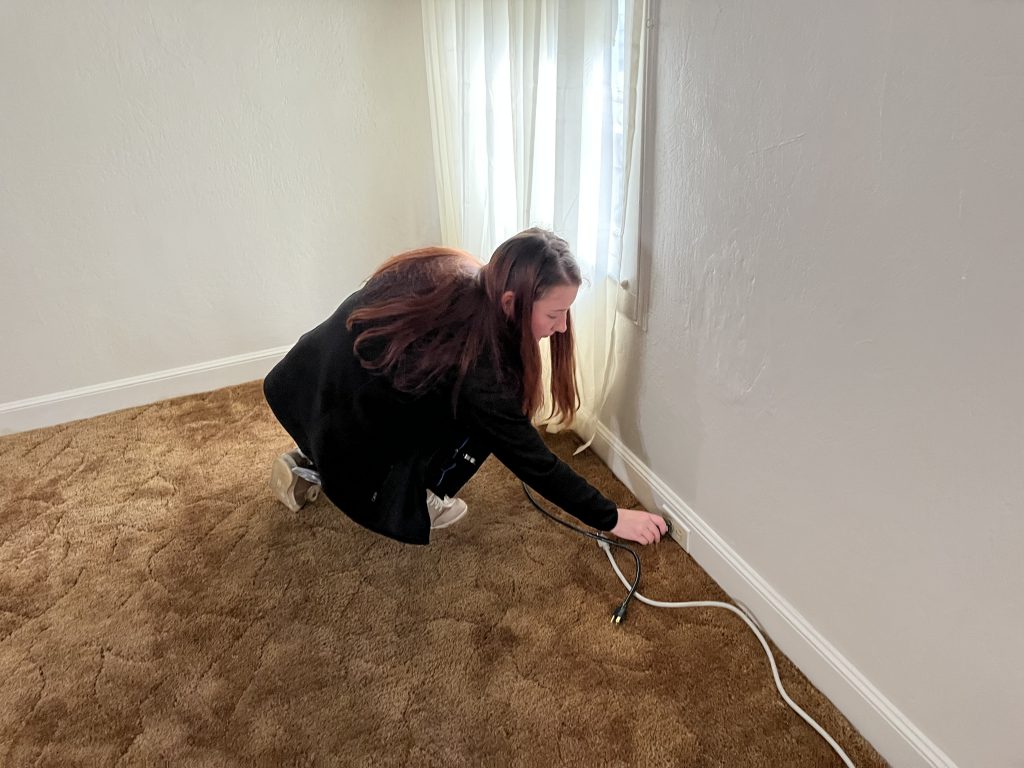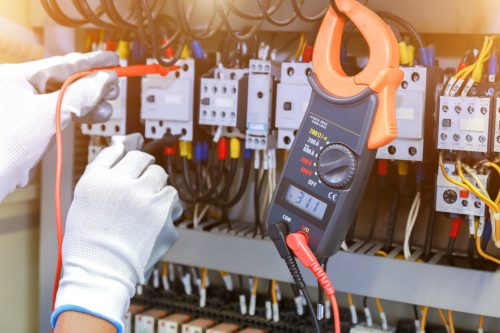A home inspection covers a lot of details to make sure that the house you’re selling is up to code, safe for a potential buyer, and doesn’t have a costly hidden maintenance issue. But even though home inspectors are trained to identify a lot of issues, they might recommend that a buyer call on an electrician’s expertise for an electrical home inspection.
That’s often because of a home’s age, its wiring, and whether the electrical service panel has been updated. “A lot of older homes have different wiring,” said Glover “There’s a wiring called knob-and-tube that still exists in a lot of homes today. There are some complications with that.”
Here’s what you need to know about this particular home inspection and how to spot any potential problems that might need a professional’s help.
Your home’s electrical system is a vital component of protecting your family—and anyone who buys your home. Electrical distribution or lighting equipment in the home remains the 4th leading cause of home fires, according to the National Fire Prevention Association.
The National Fire Protection Agency said in a 2017 report that electrical distribution, lighting, and power transfer equipment was involved in 57% of home structure fires from 2010 to 2014.
In all, U.S. firefighters from 2010 to 2014 responded to an estimated annual average of 45,210 home structure fires with some type of electrical failure or malfunction, the NFPA said. These fires caused an estimated $1.4 billion in property damage and killed an estimated 420 people and injured about 1,370, NFPA statistics show.
Homeowners can schedule an electrical inspection once a year as a preventive safety measure; it’s also sometimes requested by a lender when refinancing your home.
Beyond that, the Electrical Safety Foundation International (ESFI) of Rosslyn, Virginia, the premier nonprofit authority dedicated to promoting electrical safety at home and in the workplace, recommends an electrical system inspection for anyone purchasing a home that was previously owned.
The ESFI also recommends an electrical system inspection if your home meets the following conditions:
A licensed electrician or electrical contractor performs these inspections, which range in price depending on the size of the building, the contractor used, and who’s requesting the inspection: the seller, the buyer, a lender or an insurance company.
Glover says that a home electrical system inspection costs about $150 to $200. Some companies charge slightly less, according to the home service directory Thumbtack, which notes that electricians cost a national average of $75 to $125.
Some electrical issues take simple and relatively inexpensive fixes. Decker Home Inspection Services in Skokie, Ill., for instance, charges $10 to $15 each for rewiring, correcting or reversing polarity on an electrical outlet. For replacing an old outlet with a GFCI or AFCi outlet, this company charges $40 to $60 per outlet.
Other services are more costly. Electricians in your area may vary in price, of course, but Decker charges $75 to $125 to replace a circuit breaker and $1,500 to $2,500 to upgrade a home to 200 amp service.
Everything in real estate is negotiable including inspection requests. But if an electrical home inspection yields issues with the house, you’ll likely be on the hook to remedy any problems that could pose a threat to the buyer’s health or safety such as faulty wiring or fire hazards. The absence of GFCIs is also a common thing home inspectors find and buyer’s agents will recommend that their client ask the seller to fix.
More cosmetic electrical issues—such as changing out a light fixture or light-switch plate that is fully functional—would not be something you’d want to agree to change out per a buyer’s request unless you were in a weak position of leverage.
When in doubt, consult with your real estate agent about whether you should get an electrical home inspection before putting the house on the market or how to handle this extra step if it does arise during closing. Experienced real estate professionals will have been through this before with other sellers and be able to guide you through any surprises or expensive fixes for an ultimately successful sale.
It’s not uncommon, especially in older homes, to find exposed incandescent light bulbs in closets. All light bulbs in closets must be fully covered or enclosed in some sort of housing to prevent the heat from the light bulb becoming another potential fire hazard. Thinking about upgrading the lights in your home? Here’s everything you should know about smart home lighting.
On outdoor receptacles, flat covers provide protection only when a receptacle isn’t in use, but it’s not uncommon for extension cords to be plugged in for extended periods of time; take holiday lights, for example. In-use or “bubble covers” provide protection at all times.
The national electrical code defines a “wet location” as an area that is subject to saturation with water or other liquids, and unprotected locations exposed to the weather. The national electric code has another definition for “damp locations” that is more subjective, but if you think the receptacle is going to get wet, use an in-use cover. And don’t forget the weather-resistant receptacle.
From any point along a wall line, a receptacle outlet needs to be within reach of a 6-foot appliance cord, and that 6 feet cannot be measured across a passageway. The purpose of the national electric code is to reduce the use of extension cords. The bottom line is that extension cords can start fires and create tripping hazards — the fewer extension cords, the better. Plus: Check out these home inspector horror stories.
Tamper-resistant receptacles are designed to stop a child from inserting an object, such as a paper clip, into an outlet. They’re required for all locations, indoors and out. Tamper-resistant receptacles are a great invention, so use them — it’s national electric code. We’ll show you how to correctly install a tamper-resistant outlet.
Any unused openings in electrical panels need to be filled in order to prevent any shocks or sparks from escaping the panel and to keep pests or critters from crawling into the panel. Luckily, filler plates made to plug those gaps are easy to find online and don’t cost much. Just be sure to get filler plates that match the manufacturer of your electrical panel.
GFCI outlets are part of the building code in rooms where moisture is present (kitchen, bathroom, laundry room, etc.). Your inspector will know how to test these outlets properly, and malfunctioning or non-working GFCI outlets could hint at bigger electrical problems. Learn how to test GFCIs here.
When do I need a residential electrical inspection? | What does an electrical inspection include? | Who do I call for an electrical inspection? | How much do electrical repairs cost? | Can I DIY electrical work to save money?
Homes built before 1960 may not have the electrical capacity to handle modern appliances. Additionally, older wires may corrode, presenting a fire hazard. An electrician will likely recommend rewiring older homes, replacing the electrical panel, outlets, switches, and fixtures.
A savvy realtor can help you determine whether a home you’re interested in will need an electrical inspection.
When buying a property, your home inspector will do a visual inspection of some electrical system elements, including:
An electrical inspector leverages expert knowledge to examine the electrical system at a deeper level, offering a more thorough and focused analysis. They will be able to make recommendations on potential fixes and improvements to ensure the safety and reliability of your electrical system.
Electrical inspectors operate under the National Electrical Code (NEC). The NEC defines the standards and requirements for electrical installations within The United States to ensure safety and protection from electrical fires and shock injuries. The NEC is revised every three years to leverage the latest safety findings.
Following the survey, your inspector will provide a report with a detailed list of electrical repairs that need immediate attention as well as suggestions for safety upgrades.
If required, a licensed electrical inspector can provide official documentation on the health of the electrical system for insurance companies and mortgage lenders. In the context of a home sale, this would only be necessary if the general home inspector found something troubling in their inspection that warranted further examination before lenders or insurers would back the sale.
Licensed electricians and electrical contractors can perform electrical inspections. Different states have varying requirements and processes for licensing.
Those entering the electrical trade are considered “apprentices.” An apprentice needs a number of work hours alongside a professional to qualify to test for the “journeyman” title. Journeymen must then train with a “master” electrician before they can test to achieve that title.
Generally, journeymen charge less for their services than masters. An electrician with the master title has more experience in the field, comparably.
All electrician licensing tests are based on the National Electric Code. They are required in addition to state and local minimums for on-the-job experience.
When hiring an electrician to conduct a home electrical inspection, be sure you’re hiring a licensed professional. Ask about their insurance coverage in the event of injury or property damage.
If you are having your electrical system inspected when buying a home, your real estate agent and general home inspector should be able to provide referrals to reliable professionals with whom they’ve worked in the past.
Electricians typically charge $40-100 per hour. Big jobs, like rewiring an entire home, may take up to a week. Smaller jobs, like rewiring a single room, may take one or two days.
A common repair nowadays involves replacing aluminum wire with copper wire. Homes built before 1960 generally used aluminum wire, which tends to heat up very quickly, causing a fire hazard.
Replacing knob-and-tube with copper wiring costs $6-10 per square foot, including materials and labor. You’ll also need to update the circuit panel and replace all outlets, switches, and wiring for lighting fixtures at the same time. If your home still has its original fixtures, you’ll likely want to update those as well, the cost of which is additional.
If you’ve recently remodeled your home and added a heavier electrical load, you may need to upgrade your electrical panel, which costs $500-4,000.
While some aspects of home wiring can be DIY because they don’t involve costly or specialized tools, it’s not generally recommended unless you have some electrical knowledge and experience.
If you don’t love your Clever partner agent, you can request to meet with another, or shake hands and go a different direction. We offer this because we’re confident you’re going to love working with a Clever Partner Agent.
Whether the electrical work for new construction or remodeling work is done by a licensed electrician, or by you, the homeowner, the proper procedure generally includes two reviews from an inspector who is employed by the community’s building code office. Electrical inspections may also take place for other reasons, such as when you are considering buying a house or when you are putting your house up for sale.
The most comprehensive inspections occur when electrical work requiring building permits is being done, such as during construction of a new home or major room addition. Major remodeling work to a kitchen or bathroom also requires permits and electrical inspections. The goal of the inspections process is to make sure that the applicable electrical codes are being followed, to ensure that the installation is safe. In these instances, an electrical inspector will need to visit you on at least two occasions.
The first is called the rough-in inspection. This takes place when you have installed all of the electrical boxes, cables, conduit, and wires to the point that you are ready for the walls to be closed up by surfaces. This inspection needs to be done before the insulation is installed, so that the inspector has a clear view of all of the wire runs from service panel to fixtures and appliances.
The second inspection takes place when the house is complete, but before you are allowed to begin using the space. This inspection is called the final inspection. At this point, all of the walls are closed in, painting is finished, floors are complete and you are ready to install the furniture. Be sure that all of the circuits are functioning and every light fixture has been hung and is connected. If the inspector approves your work now, it means that it meets professional standards and that it is up to code.
Electrical inspections can be quite perfunctory and swift when an inspector is reviewing the work of a professional electrician or contractor that he knows and has worked with before. A level of trust develops between inspectors and skilled contractors, and the inspections may be little more than formalities. But you should expect a more detailed inspection if you are doing the electrical work yourself. There is good reason for this. Inspectors want to make sure that amateur work is being done “up to code” and is perfectly safe. This does not mean that you should fear the inspections. Inspectors simply want to make sure your work is safe, and they can be a great source of information. Should you make a mistake, you will have every opportunity to make the corrections, and the inspector will return as often as it takes to ensure the work is safe.
To save yourself the frustration and the heartache of making mistakes, it’s a good idea to ask the inspector for the specifics of required circuits and for instructions before you begin any work. Some inspectors have specific preferences that may vary slightly from the official code requirements—and in this case, it is the inspector who is the law. The inspector will also greatly appreciate your obvious intention to do good work, and your installation will likely pass easily when he visits to review the work.
An electrical home inspection provides a thorough examination of your entire electrical system, ensuring all electrical wires, systems, and components (such as appliances) meet legal safety standards. The National Electrical Code (NEC) is the code that all electricians operate under when examining your home, and defines the parameters for minimum standards across the United States. Upon completion of your electrical home inspection, a Mr. Electric® inspector will provide a detailed, prioritized checklist including areas in need of immediate attention, recommendations for improvements, and potential upgrade possibilities.






